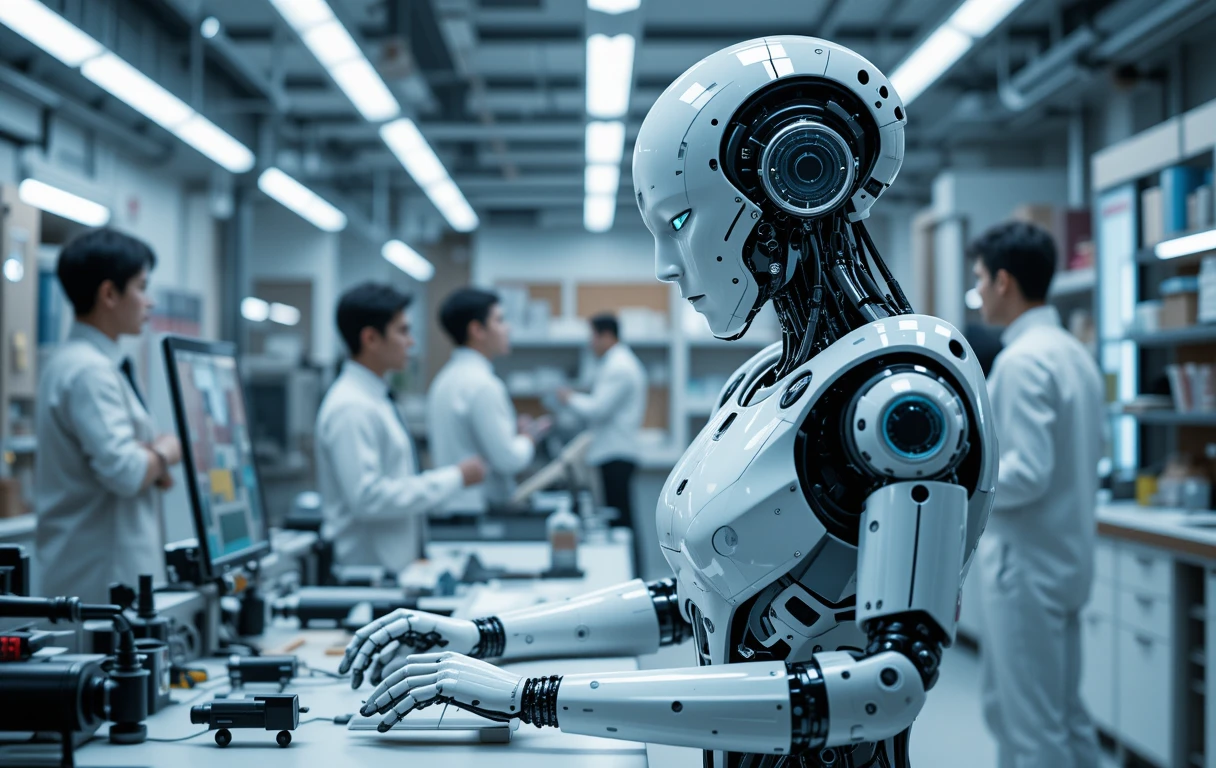Robotics is no longer just the stuff of science fiction—it’s a driving force behind the transformation of industries and everyday life. As we embrace 2025, robotic innovations are advancing at lightning speed, solving real-world problems and opening doors to possibilities we never imagined. From medical breakthroughs to redefining how we interact with technology, robots are not just helping us—they’re reshaping the world as we know it.
In this article, we’ll dive into the top 10 robotics innovations of 2025 that are changing the game across various fields. Get ready to be amazed by the future!
The Revolution in Healthcare Robotics
Healthcare is witnessing a robotics revolution that goes far beyond robotic surgery. In 2025, robots are saving lives and transforming patient care in ways we couldn’t have dreamed of a decade ago.
Take for example surgical robots, which now feature even greater precision with AI integration, allowing them to perform complex surgeries with minimal invasiveness. Robots like the Da Vinci Surgical System have been upgraded with real-time imaging and decision-making capabilities. Beyond surgery, companion robots are helping elderly patients combat loneliness, monitor health, and remind them to take medications.
Another exciting innovation is the rise of micro-robots, tiny devices that can travel through the bloodstream to diagnose and treat diseases like cancer. Imagine a robot swimming through your veins to deliver medicine directly where it’s needed—sounds like something out of a sci-fi movie, right?
Autonomous Delivery Robots: A Logistics Game-Changer
Robotic delivery is redefining the logistics industry in 2025. Autonomous delivery robots are rolling down sidewalks and flying through skies to bring packages, groceries, and meals right to your doorstep. Companies like Starship Technologies and Amazon Robotics are leading the way, deploying robots capable of navigating complex urban environments.
What makes 2025 unique is the rise of hybrid delivery robots. These machines can seamlessly transition between land and air, enabling faster deliveries in hard-to-reach areas. Not only are they eco-friendly, but they’re also helping reduce delivery costs for businesses.
Agricultural Robotics: Feeding the World with Precision
As the global population grows, robotics is stepping in to revolutionize agriculture. In 2025, precision agriculture robots are making farming more efficient and sustainable.
For instance, autonomous tractors equipped with GPS and AI can plow, sow, and harvest crops with remarkable accuracy, reducing waste and maximizing yield. Similarly, crop-monitoring drones can analyze fields in real-time, identifying pest infestations or nutrient deficiencies.
One of the most groundbreaking innovations is the emergence of robotic harvesters, which can pick fruits and vegetables with the delicate touch of a human hand, yet work tirelessly around the clock. This is particularly vital for addressing labor shortages in the agricultural sector.
Humanoid Robots: Breaking Barriers in Human Interaction
Humanoid robots are no longer confined to research labs. In 2025, they’re entering homes, offices, and even classrooms, where they serve as personal assistants, teachers, and companions.
Robots like Tesla’s Optimus and SoftBank Robotics’ Pepper have taken significant strides, with enhanced emotional intelligence and conversational abilities. These robots can not only follow instructions but also engage in meaningful interactions, making them ideal for customer service and therapy roles.
What’s truly groundbreaking is the emotional bond some people are forming with humanoid robots. They’re not just machines; they’re becoming part of the human experience.
Swarm Robotics: Collective Intelligence in Action
Swarm robotics, inspired by the behavior of ants and bees, is one of the most fascinating advancements in robotics. In 2025, swarm robots are being used for tasks that require coordination and teamwork.
These small robots work together to achieve complex goals, such as disaster recovery, search-and-rescue missions, or even constructing buildings. For instance, swarm robots can be deployed to locate survivors in earthquake rubble, with each robot communicating and collaborating in real-time.
Companies like Festo are pushing the boundaries of swarm robotics, demonstrating how collective intelligence can outperform individual machines.
Space Exploration Robots: Pioneering the Final Frontier
The future of space exploration is robotic, and 2025 is proving to be a landmark year. Robots like NASA’s Perseverance Rover are already exploring Mars, but newer models are being designed to operate autonomously for extended periods, gathering data and performing tasks in harsh extraterrestrial environments.
One of the most exciting developments is the deployment of robotic assistants for astronauts, such as Astrobee, which can perform routine tasks on space stations, allowing astronauts to focus on critical research.
In the not-so-distant future, robots may even help us build colonies on the Moon and Mars, paving the way for humanity’s next giant leap.
Exoskeleton Robots: Empowering the Disabled and Workforce
Exoskeleton robots are giving people new opportunities to move and work. In 2025, wearable robotic suits are being used not only to help those with physical disabilities walk again but also to enhance the capabilities of workers in physically demanding jobs.
Robotic exoskeletons are a game-changer for industries like construction and manufacturing, where they can reduce injuries and boost efficiency. For individuals recovering from spinal injuries, these suits are nothing short of life-changing.
Underwater Robots: Exploring the Depths of the Oceans
Our oceans remain one of the least explored frontiers, but robots are diving in to change that. In 2025, autonomous underwater vehicles (AUVs) are being deployed to map the ocean floor, study marine ecosystems, and even locate shipwrecks.
One of the most significant innovations is the use of bio-inspired underwater robots, which mimic the movements of fish and other marine creatures to navigate more efficiently. These robots are unlocking the secrets of the deep, helping scientists understand climate change and marine biodiversity.
Robotics in Entertainment: Bringing Stories to Life
Entertainment and robotics are colliding in magical ways in 2025. From animatronics in theme parks to robots starring in movies, these machines are becoming integral to how we experience entertainment.
For instance, robotic actors can perform stunts that would be too dangerous for humans, while interactive robots in theme parks can create personalized experiences for visitors.
The Future of Robotics: Looking Ahead
The top robotics innovations of 2025 are just the beginning. With advancements in AI, machine learning, and materials science, the possibilities for robotics are endless.
As we look ahead, one thing is clear: robots aren’t just tools—they’re partners in shaping a better, more sustainable, and exciting future.




